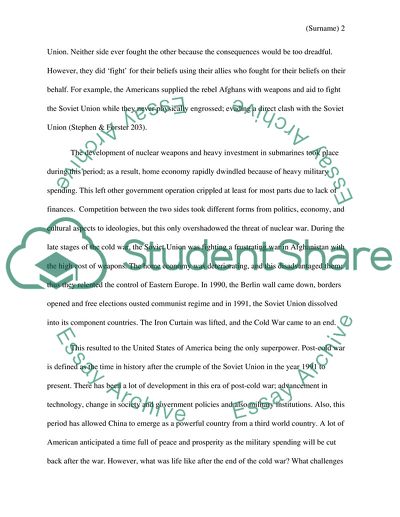Cite this document
(The Challenge of Post-Cold War Operations Assignment, n.d.)
The Challenge of Post-Cold War Operations Assignment. Retrieved from https://studentshare.org/history/1803846-the-challenge-of-post-cold-war-operations
The Challenge of Post-Cold War Operations Assignment. Retrieved from https://studentshare.org/history/1803846-the-challenge-of-post-cold-war-operations
(The Challenge of Post-Cold War Operations Assignment)
The Challenge of Post-Cold War Operations Assignment. https://studentshare.org/history/1803846-the-challenge-of-post-cold-war-operations.
The Challenge of Post-Cold War Operations Assignment. https://studentshare.org/history/1803846-the-challenge-of-post-cold-war-operations.
“The Challenge of Post-Cold War Operations Assignment”, n.d. https://studentshare.org/history/1803846-the-challenge-of-post-cold-war-operations.


